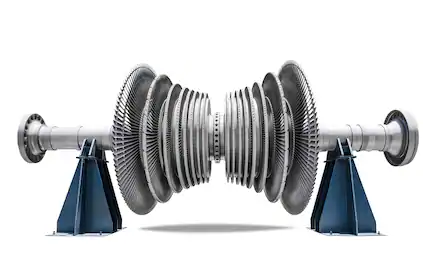This article discusses the filtration of hydrocarbon gases containing non-condensing liquid droplets and solid particles. The presence of liquid droplets and solid particles in hydrocarbon gases, highly complicates the pipeline transport operation, with a negative impact particularly on the compressor equipment operations.
Small solid particles entering the compressor cause increased surface wear of the gas flow chamber and large solid particles lead to severe surface erosion that can lead to the compressor rotor jam.
During gas compression depending on the compressor pressure and temperature ratios, moisture in the hydrocarbon gases can be the cause of condensate formation in the compressor after the dew point.
Compressor units and other elements of the gas transport system should be adequately protected when developing hydrocarbon gases compression projects.
The removal of solid particles can be effectively implemented by using cyclone-type filters, which throw solid particles to the periphery by means of centrifugal forces providing the required degree of filtration.
Cyclone filters cannot effectively remove small suspended particles, especially liquid droplets of heavy hydrocarbons. It is therefore necessary to use fiber multilayer filter elements, often called coalescers.
Such coalescing filters should be installed in the gas pipelines only after coarse filters for removing large solid particles and condensate droplets. Coarse filters and coalescing filters can be installed in series in the same compartment.
The coalescer filter type selection depends on the gas composition, particle size, inlet gas pressure of the filtration unit and the desired degree of gas filtration from solid particles, in microns.
Coalescing filters effectively remove small mechanical impurities and can partially remove water condensate from the gas due to the sticking nature of the large liquid drops on the surface of the coalescing filter fibers, and the heaviest hydrocarbon fractions that saturate the gas before the dew point.
This provides compressor protection when compressing both hydrocarbon gases and atmospheric air. The coalescing filter in this case acts as a desiccant dehydration.
When processing a gas supplied by Gazprom subsidiaries it will be actual to remove solid particles only because natural gas is already supplied in a dehydrated condition.
Coalescer filters however do not significantly affect the dew point temperature itself. For a significant change to the dew point temperature when compressing hydrocarbon gases in the saturation state, glycol dehydration gas with glycol regeneration is used. When compressing pre-dried gas supplied by Gazprom, solid particles removal is effectively sufficient since the gas is supplied pre-dried.
If a considerable quantity of liquid fractions in gas is present the housing of coalescent filters is equipped with level sensors for drainage of accumulated condensate.
Under large amount of liquid fractions in the gas, the coalescer filter casing is equipped with liquid level sensors for the accumulated condensate drainage.
The coalescer filters are empirically selected by experienced specialists. The quality of filters depends on qualification of engineers performing the selection of filter elements.
Compressorturbo helps to find proper filtration system for any type of gas and gas processing.
